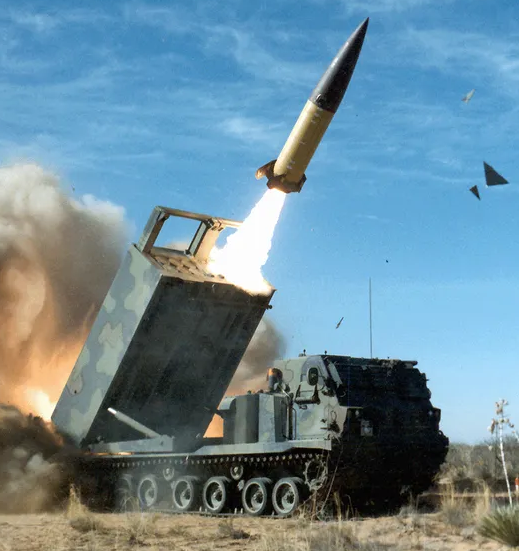I want to set up a home server and take advantage of everything it can offer, specialty privacy.
Raspberry PI, no matter the version, are all quite expensive here in Brazil, so that’s off the table. I’ll go for a regular desktop. But the the requirements for a server that “does it all” remains a mystery to me.
What specs do you guys recommend?
Anything that does the job is good enough. At its core a server is just a regular PC with a dedicated purpose and software. Sure, there are specialized hardware better suitable and purpose built, but it’s not a requirement.
I for one prefer 19" rackmount stuff with disk bays in the front, but that’s more of a convenience than anything.
UPS is nice, but it’ll work without it.
I’ve had to deal with the Brazilian computer market and how it’s ridiculously overpriced due to import fees, so in your situation I’d just get any hand-me-down computer. Servers generally don’t require much unless you’re doing something special or intensive.
Get your hands on whatever you can find for free or dirt cheap (laptop or desktop doesn’tmatter), install linux, and you have a basic setup that you can work with. If your use case requires more, then that’s something you can accommodate in the next iteration of your server.
This.
Almost all of my gear is bought used: switches, server, even memory. My main server is an old Dell C6100 blade server I got for $250. My disk array is a 12-bay SAN that I found for $50 and took a chance on being able to get it working. It’s power hungry but it’s got redundant everything and I have spare parts on the shelf next to it.
I’ve been branching into ARM servers a little and right now I’ve got an RK3588 board with 32G of RAM. That’s new (and expensive for me) but I got a fibre channel array for $20 that I’m going to try to make work with it. $8 FC HBA and a $12 cable along with a $30 m2-to-PCIe adapter intended for eGPUs. I’m not going for speed here, but used data centre equipment is nice and some of it is dirt cheap because it’s too slow for “real” work.
The joke is electricity and Linux.
The real answer is the free hardware.
My main reliable is from 2008? It cannot do modern virtualization due to not having the CPU instruction sets.
You might check if a simple CPU upgrade would get you there. I previously ran some 2005 Poweredge servers that came with a Pentium D processor, and it cost me something like $8 from ebay to upgrade to a Xeon and start running KVM.
What are you intending to run on this server?
-
If it is just PiHole, you can basically get the weakest computer you can find.
-
If you want lots of storage space, you will need to make sure you have a case and motherboard that will accommodate the drives.
-
If you are running encryption on those drives as well, you will need a CPU more powerful than what comes in a Pi, but nothing crazy.
-
If you are running lots and lots of VMs, you will want lots of RAM. A linux VM will use maybe a few GB each depending on what software each is running internally, a windows vm will use a bit more.
-
If you are doing AI workloads, you will need a graphics card.
-
Take a look at some N100 devices (or N95/N150).
These are a good alternative to RPis. Just be aware some of these are sort of haphazardly assembled so they might have cooling issues or bad power supplies.
Can’t say my Chuwi Larkbox X has any issues (other than missing a few QoL settings in the UEFI).
When I started my media server in 2020 I used e-waste from my building. Had an i7 3770, 16gb ddr3 ram and an rx460 graphics card. I ran jellyfin, ultrasonic and audiobookshelf for 10-15 people with no problem on this hardware. Anything made within the last decade should provide a good starting point for you.
This was almost my gaming PC specs in 2020. Rx580 and 16gb more ram. It’s now my server running jellyfin and immich for my family.
Rx580 was such a workhorse card. Used mine until a year ago and then it went to a friend who’s still using it today.
My Rx580 has basically been on continuously since I bought it in like 2017/18. I used it to mine when I wasn’t gaming until it became unprofitable, then to process sequencing data for my dissertation project while not gaming, and now it’s in my server.
Keep an eye out for people trashing perfectly good desktop machines because Windows 10 is being retired.
If you want a server that “does it all” then you would need to get the most decked-out top of the line server available… Obviously that is unrealistic, so as others have mentioned, knowing WHAT you want to run is required to even begin to make a guess at what you will need.
Meanwhile here’s what I suggest – Grab any desktop machine you can find to get yourself started. Load up an OS, and start adding services. Maybe you want to run a personal web server, a file server, or something more extensive like Nextcloud? Get those things installed, and see how it runs. At some point you will start seeing performance issues, and this tells you when it’s time to upgrade to something with more capability. You may simply need more memory or a better CPU, in which case you can get the parts, or you may need to really step up to something with dual-CPU or internal RAID. You might also consider splitting services between multiple desktop machines, for instance having one dedicated NAS and another running Nextcloud. Your personal setup will dictate what works best for you, but the best way to learn these things is to just dive in with whatever hardware you can get ahold of (especially when it’s free), and use that as your baseline for any upgrades.
This. Be on the lookout for company grade PCs, like from Dell, Lenovo or Fujitsu, they come in small form factors, offer decent upgradability and are low/on power consumption and noise (most of the time)
You have to have an idea of what you’ll run on it first.
Old corporate desktops will do for a NAS and basic light services. Look for one that has three drive bays plus an NVMe slot.
Had this link in my clipboard for a different comment but it fits here as well: https://hackaday.com/2025/04/09/self-hosting-a-cluster-on-old-phones/
In all honesty this may be a bit advanced depending on your experience and more importantly nerves, but any old PC/laptop can be turned into a server.
As for parameters I would suggest you go to the apps you plan on running and check their minimum requirements.
If you have an old android phone, then you can repurpose it into a Linux server.
Or an old computer. But you probably don’t need to buy anything to get started.
Link to guide to install a Linux server OS on Android device?
General Linux servers distros do not support android devices, you would need postmarketos.
Find out if there are any corporate off-lease machines being sold in your area. USFF machines are frequently used as mini desktops or point of sale computers then sold off for peanuts when warranties are done. Especially look at i3-8xxx generation, as they don’t support windows 11 fully.
Any corporate fleet machines, really. Corporate C-suite executives always demand the best laptops on the market… They also demand the newest laptops on the market. Because they can’t be seen with a worse laptop than the graphic artists or the programmers. This means there’s always fresh stock of last year’s corporate laptop hitting the used market. And they’re almost always gently used, because they just sat docked on some executive’s desk for a year, and were only used to answer emails.
Those $2000 laptops often get dropped on eBay for like $250, because the random Accounting person who has to auction them off doesn’t really care how much they sell for; They’re just checking a “was sold to recoup costs” checkbox.
How does one find such retired laptops? As an individual hobbyist in the US, would I just monitor eBay, Craigslist, or Facebook?
Yes. EBay and Amazon have a certified refurbished thing with warranties for a little more money, or monitor local classified sites if you can inspect them. I’ve bought a couple off Kijiji here in Canada, which is a bit like Craigslist and Facebook marketplace. The sellers didn’t advertise that they were a business selling off-lease stuff, but you can tell by the number of laptops they post.
One hundred percent go for USFF. Even the cheapest, most basic processor will smash server roles because it’s not having to power desktop applications, graphics, window managers, etc.
A computer. Seriously that’s it. Of course depends on your use case (media servers usually need more than a web host for example)
My current server is just my previous desktop PC hardware. $0 when you repurpose while upgrading your desktop.
The minimum spec is whatever e-waste you can find that still powers on.
My home server has an i3-4160, 10 gigabytes of mis-matched RAM, a ten-year-old 240 GB SSD with 36000 hours on it, and three 1 TB hard drives in a RAID5 array each with ~25000 power-on hours. It runs Proxmox on the metal with a virtualized OPNsense, Nextcloud, and Jellyfin server (plus smaller services). Jank levels are high, but not fatal, and it was mostly free.
Living dangerously
If you are buying I wouldn’t get something older as the newer stuff is the same price often times because it is less well known.
Gotta see some evidence on that claim. Older stuff is more power hungry no doubt about it, but especially old data centre equipment is waaay more reliable and built with some very nice creature comforts.
Check the data sheets for the components. It should have a Average time to failure which will tell you about how long it will last.
It might be fine but I personally wouldn’t rely on ancient drives
oh I wasn’t talking about storage media. I’m talking about rack servers, switches, storage arrays (with new drives), etc., etc… The older hardware can wear out/break (I used to do MTTF/MIL-HDBK-217 calculations for avionics) but generally speaking it’s got a lot of life left in it by the time it hits the surplus market. It’s also usually designed with redundancies/failover mechanisms which means you don’t have to bodge together inferior solutions.
I misunderstood then
Carry on
For Linux: Anything Intel 4xxx is fine, later is better obviously. 4GB RAM is OK for one family, 8GB gives enough headroom to host NextCloud for a small office. SSD for operating system makes it snappy as fuck at the terminal but aren’t mandatory, slow drives for storage are fine.
Depends on what you want the server to do. A Minecraft server and a Pihole server have vastly different requirements. As a general rule, any old laptop or desktop will do, think on requirements for your grandma and that should cover most (except gaming servers) needs.
The one you already have.
That’s the thing, when I buy new devices, my old ones usually go to my parents or for donation. So I have no old tech laying around, sadly. I’ll have to buy, that’s the reason for the post.
You dont have to buy new. Go to a thrift store and buy used if you have nothing lying around.







